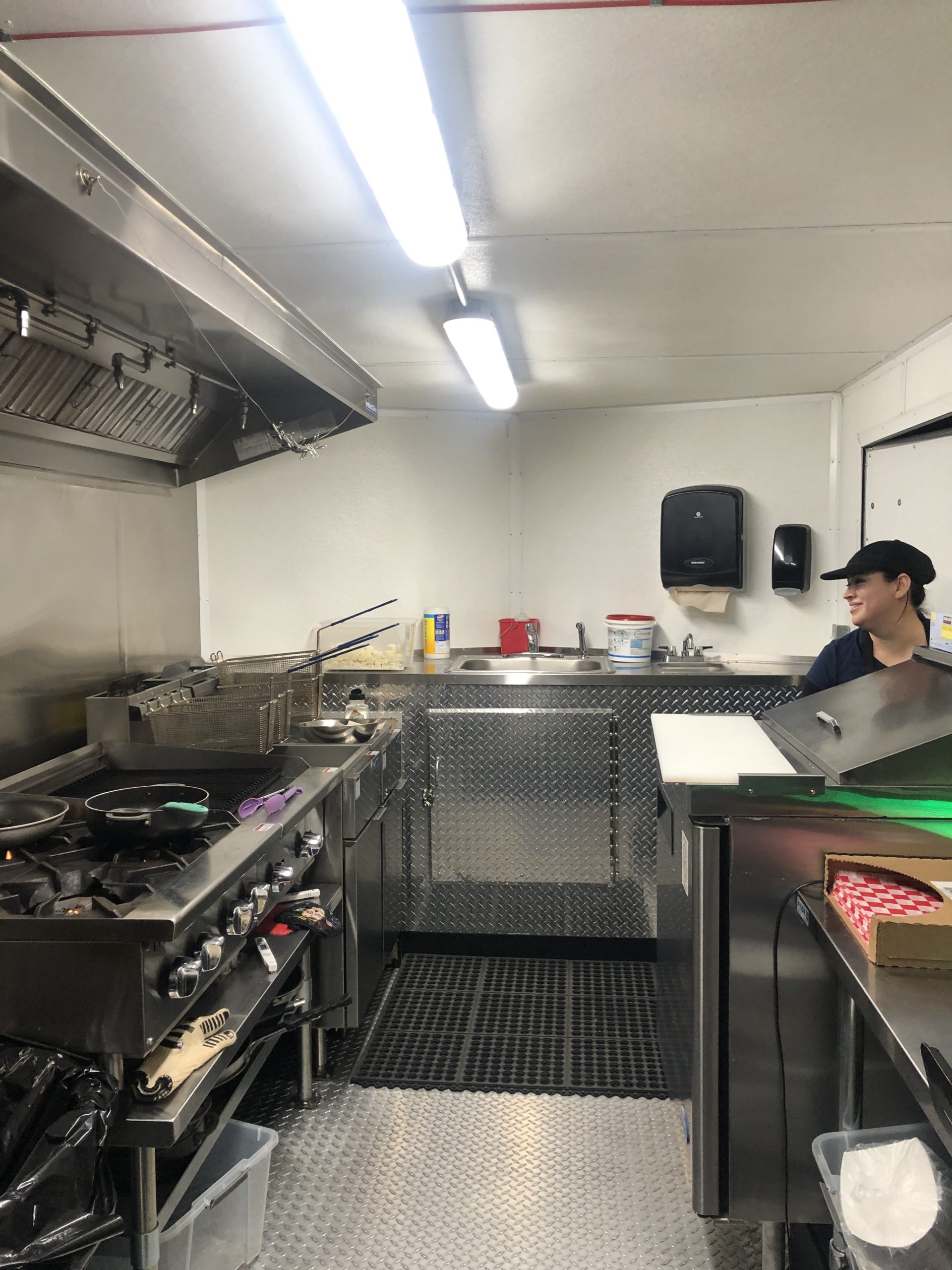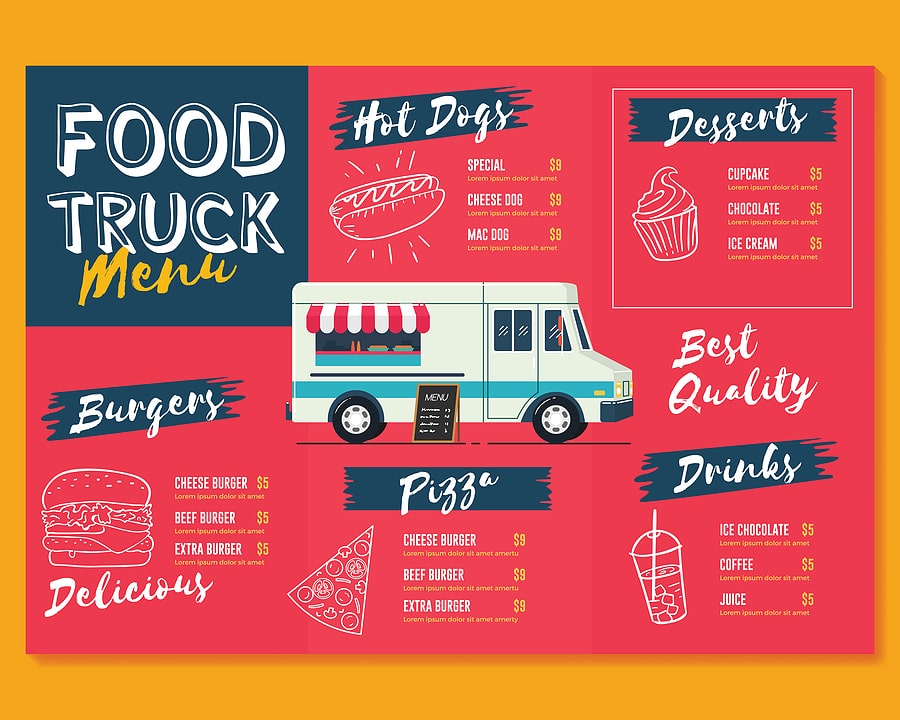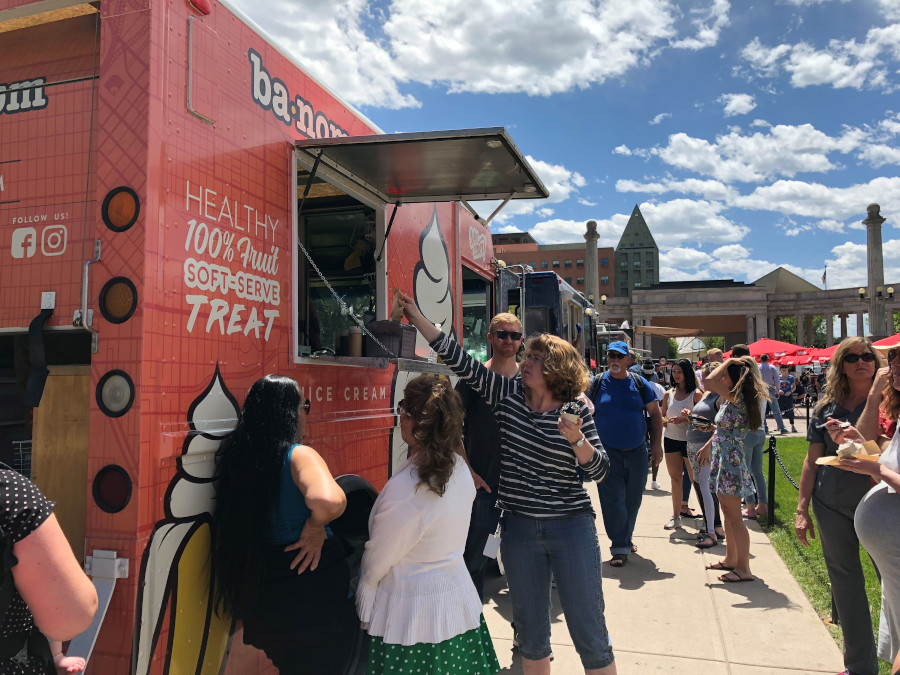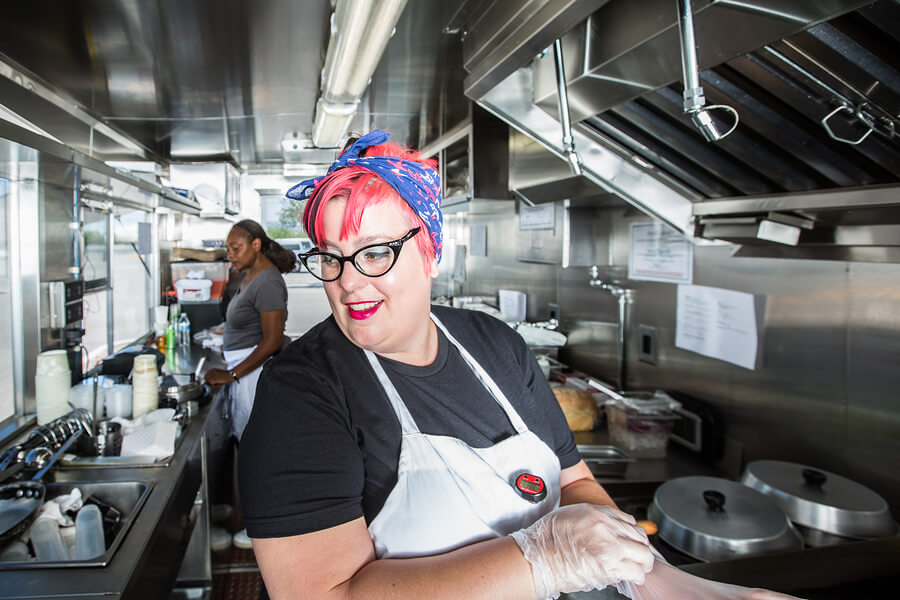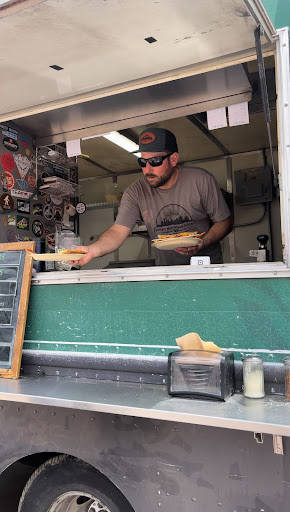
As you know, running a food truck is an exciting and rewarding venture! However, when summer arrives with its blistering temperatures, it’s essential to find ways to stay cool. Balancing the demands of a food truck and the summer heat can be challenging, but we’ve got practical tips below so you can beat the heat and stay cool this summer.
1- Dress for success
Choosing the right clothing can make a huge difference in staying cool while running a food truck. If you have a uniform, be sure it’s summer-friendly with breathable fabrics like cotton or linen. Avoid multiple layers or accessories that might limit your ability to cool off. Also, remember that darker or black clothing absorbs more heat, making the clothing warmer to wear!
2- Air circulation is our friend
While running a fan does take energy, it can make all the difference to ensure you have some air circulation inside your food truck. You can also cool your truck off with no power if you have two windows opposite of each other, which will create cross ventilation! Also, consider using portable air conditioning units or swamp coolers to create a cool atmosphere.
3- Stay hydrated with popsicles
Most people like popsicles, but what about popsicles that can also hydrate you too? Something simple to keep your staff happy and on their feet are homemade electrolyte popsicles. These delicious, fun, and no added sugar treats are perfect to stay cool on a hot summer day. Here’s a link to a recipe that is quick and easy.
4- Throw the towel in (the fridge)
Another cost-effective and simple way to cool off this summer is prior to a shift start, take some towels or extra rags, wet them, and then put them at the bottom of the fridge. Later on, take them off and place them around your neck as a cold wrap, and let the cool down commence!
5- Location, location, location
When arriving at an event, try to park your truck in a location that offers some shade, if at all possible. If you aren’t able to secure shade, try to find a location that is either concrete or gravel, which are both going to be significantly cooler than asphalt.
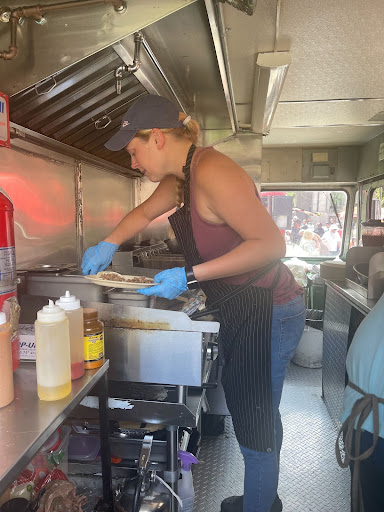
6- Limit heat-producing appliances
Cooking is inevitable with all food trucks. However, consider tailoring your summer menu to avoid having a grill, fryer, and oven running all at once. If altering a menu isn’t a possibility, try to power down any appliance whenever you can. Even lights can produce extra heat you don’t want or need!
7- Stay hydrated
This is pretty straight-forward, but can often be overlooked! Hydration is the key to staying cool and performing your best for your customers. Prepare the day before an event by consuming plenty of water as your body will be better hydrated for the next day. Bring plenty of water for the event to ensure you and your staff stay hydrated and don’t start suffering from heat exhaustion.
8- Know the signs of heat exhaustion
The first step in solving a problem is recognizing there is one. While working during a hot summer day, if you start experiencing any of the symptoms below, you are in danger of heat exhaustion:
- Headache
- Nausea or vomiting
- Poor coordination
- Anxiety
- Weak, rapid pulse
- Sweating heavily
- Thirst
If you are feeling one or several of these symptoms, be sure to lie down in shade or air-conditioning for an extended break, drink water, and cold compress, if available. If your symptoms worsen, call 911 immediately.
Remember, staying cool isn’t just about comfort, it’s also a crucial element for the success of your food truck business during the scorching summer months. Running a food truck in the summer can be challenging, but with the right strategies, you can beat the heat and keep your cool.
For more food truck owner tips for success, check out The Truckster Blog or consider getting the Truckster Vendor App.
Article




